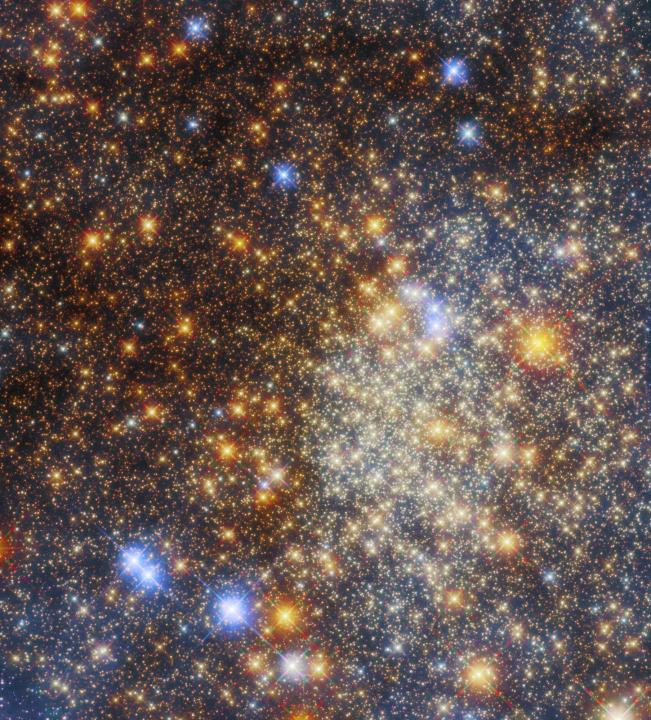A new image from the Hubble Space Telescope shows a stunning field of thousands of stars, part of a globular star cluster called Terzan 12. These groups of stars are bound together by gravity, in a packed configuration that is roughly spherical. This particular cluster is located within the Milky Way, in the constellation of Sagittarius, and is around 15,000 light-years away from us here on Earth.

As Hubble scientists point out, this particular cluster is a good example of the way that dust plays an important role in astronomical investigations. To see the cluster, we need to look through clouds of dust and gas located within the Milky Way. And these can affect the observations we get of objects within our own galaxy. “This location leaves a lot of room for intervening interstellar dust particles between us and the cluster to scatter blue light, causing only the redder wavelengths to come through to Earth,” Hubble scientists explain. “The interstellar dust clouds are mottled so that different parts of the cluster look redder than other parts along our line of sight.”
The other reason that there are so many different colors of stars visible in the image is that stars change color as they age. The youngest stars are often the hottest, glowing bright blue, but the hottest blue stars visible here are actually located behind or in front of the cluster, not within it. The cluster itself contains only older stars, which cool as they get older and give off a red light.
Global clusters are of particular interest to astronomers because they often contain these old stars. They are the oldest type of star cluster, and scientists can tell their age due to the levels of heavy elements contained within them. The early universe was made up of mostly hydrogen and helium, and elements like metals were only introduced later when they were forged within stars due to fusion. So if you see high levels of heavy elements in a star, you know that it is more recently formed. In the case of stars within the globular clusters, they often have low levels of these heavy elements, showing that they are very old.



